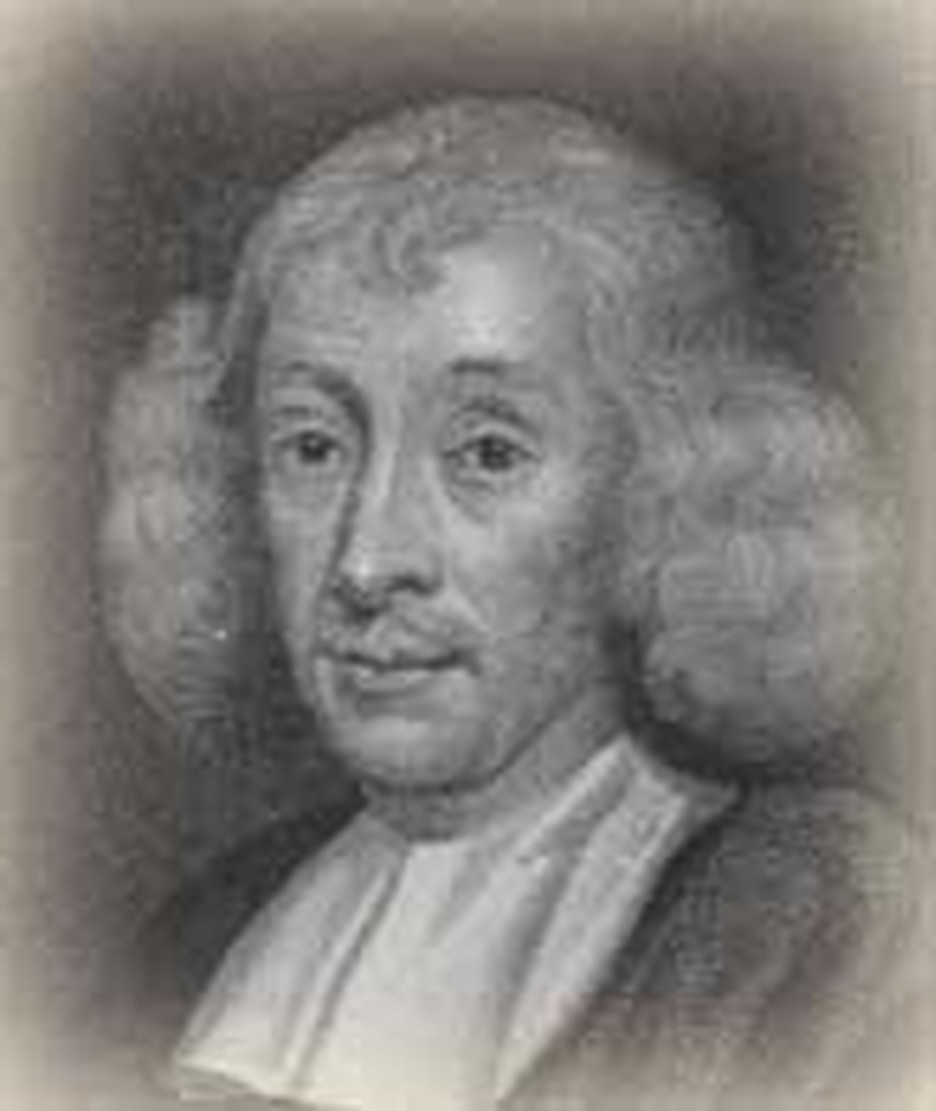
John Ray and his friend Francis Willughby made an amazing pact together: they would make a systematic description of all the plants and animals of the world! Ray was to do the plants; Willughby the animals. Their descriptions were to be totally based on observations; they would not include the mythical creatures often added by naturalists to previous works.
The two naturalists traveled throughout England and Europe, carefully observing the flora and fauna. Though Francis died in 1672 at the age of 37, he left John a stipend in his will, and John faithfully edited and published Willughby's notes on birds and fishes while continuing his own work on plants.
John's work suffered from some serious mistakes, but all the same was a great step forward in the classification of species. He had asked himself what should be the guiding principle for arranging plants logically according to types? Should a plant be classified according to its root system, leaf shape, blossom, fruit, or habitat? He asked himself the question, "What fundamental ordering principle has God used?"
Based on Genesis 1, John said species were descendants of a male-female pair created by God, like the human race. John's definition of a species was boldly simple, yet could apply equally to plants and animals. A species, then, was a set of individuals who reproduce new individuals similar to themselves. Though there might be vast variations and mutations within a species, he believed that at bottom there was a fixity of species. The even-more famous German Lutheran scientist Carl Linneaus based his own famous classification system on John's definition.
John looked upon his work much like Adam's naming of the animals in the Garden. Once the detailed observations of plants and animals had been made, he began the task of interpreting the significance of physical processes, including how form and function were adapted to the environment and the nature of instinctual behavior. For example, he asked the question, "Why are there so many unpleasant creatures like insects?" His answer looked for God's purpose in creation. Ants were more numerous than any other tribe of insects because so many other creatures lived upon them and their eggs. Some insects yielded medicines for men, while others might be used by God as a scourge on the wicked.
The more John studied nature, the more he became in awe of the God who had created it. Anyone who thought this world with its many creatures and detailed design could have come about without a Creator must be highly irrational, he thought. This led him to write The Wisdom of God Manifested in the Works of the Creation, which he had begun years before in school, and which was used as a major text in natural theology for two centuries.
John Ray believed careful study and observations of God's creation could not help but produce a religious response in the scientist: a joyful thankfulness at God's design, a realization that the Christian faith was true, and a sense of duty to lead a righteous life before the Creator of the Universe.
Born on this day, November 29, 1627 (it is thought), John outlived many of his younger associates, dying in 1705. He did an astonishing amount of work, most of which cannot be mentioned in this short article. This included making a collection of the common folks' wise sayings.
Bibliography:
- Adapted from an earlier Christian History Institute story.
- Graves, Daniel. Scientists of Faith. Kregel, 1996.
- Raven, Charles E. John Ray, Naturalist; his life and works. Cambridge, England: The University Press, 1942.
- "Ray, John." Dictionary of National Biography, edited by Leslie Stephen and Sidney Lee. London: Oxford University Press, 1921 - 1996.
- "Ray, John." Dictionary of Scientific Biography. Editor Charles Coulston Gillispie. New York: Scribner's, 1970.
Last updated July, 2007.


